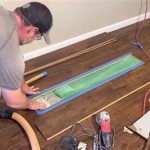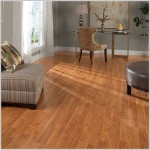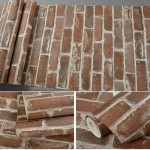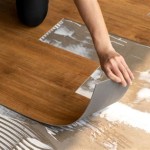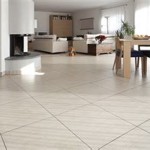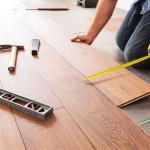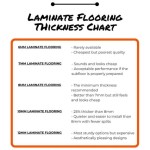Understanding Scratch Resistant Laminate Flooring
Laminate flooring has become a popular choice for homeowners seeking a durable and aesthetically pleasing flooring solution. One significant advantage of laminate is its resistance to various types of damage, including scratches. Scratch resistant laminate flooring aims to provide an even greater level of protection against everyday wear and tear, making it an appealing option for high-traffic areas and households with pets or children. Understanding the composition, testing methods, and proper maintenance techniques associated with this type of flooring is crucial for making informed purchasing decisions and ensuring long-term satisfaction.
Laminate flooring, in general, is a multi-layered synthetic flooring product designed to mimic the appearance of natural materials like hardwood, stone, or tile. Typically, laminate flooring consists of four layers: a base layer (also known as the backing layer), a core layer, a decorative layer, and a wear layer. The base layer provides stability and moisture resistance. The core layer, often made of high-density fiberboard (HDF) or medium-density fiberboard (MDF), provides the floor's structural integrity. The decorative layer is a high-resolution photographic image that gives the laminate its visual appeal. The wear layer is a transparent coating applied to the surface of the laminate to protect it from scratches, stains, fading, and other forms of damage.
Scratch resistant laminate flooring distinguishes itself through the composition and treatment of its wear layer. While all laminate flooring has a wear layer, scratch resistant variants often utilize enhanced materials and manufacturing processes to significantly improve scratch resistance. These enhancements can involve the application of multiple layers of protective coatings, the incorporation of harder materials like aluminum oxide into the wear layer, or the use of specialized surface treatments. The specific techniques used to enhance scratch resistance vary between manufacturers and product lines.
Key Point 1: Composition and Construction of Scratch Resistant Wear Layers
The wear layer is the primary defense against scratches and abrasions on laminate flooring. The composition of this layer is critical in determining the overall scratch resistance of the product. Several factors contribute to the scratch resistance properties of the wear layer.
Aluminum Oxide: Aluminum oxide is commonly added to the wear layer to increase its hardness and scratch resistance. It is a very hard, inorganic compound that is highly resistant to abrasion. Laminate flooring with aluminum oxide in the wear layer generally exhibits superior scratch resistance compared to flooring without this component. The concentration of aluminum oxide in the wear layer can vary, with higher concentrations typically leading to greater scratch resistance. The size of the aluminum oxide particles and how they are dispersed throughout the wear layer matrix will also influence scratch resistance and overall appearance.
Melamine Resin: Melamine resin is another key component commonly used in the wear layer. It provides a durable and scratch resistant surface when cured under heat and pressure. Multiple layers of melamine resin coatings can be applied to further enhance the scratch resistance. The quality of the melamine resin used also plays a role, with higher quality resins offering improved resistance to scratching and wear.
Other Additives: Manufacturers may incorporate other additives into the wear layer to improve scratch resistance, UV resistance, and overall durability. These additives can include polymers, waxes, and proprietary formulations that are designed to enhance specific performance characteristics. The specific additives used, and their concentrations, are often closely guarded trade secrets.
The manufacturing process also plays a significant role in the scratch resistance of the wear layer. The wear layer is typically applied to the decorative layer using a high-pressure lamination process. This process involves applying heat and pressure to fuse the layers together, creating a durable and scratch resistant surface. The temperature and pressure used during lamination, as well as the duration of the process, can all influence the scratch resistance of the final product. Proper curing of the wear layer is also essential to achieve optimal scratch resistance. Inadequate curing can result in a softer, less durable surface that is more prone to scratching.
Key Point 2: Testing Methods and Scratch Resistance Ratings
Various testing methods are used to assess the scratch resistance of laminate flooring. These tests often involve subjecting the flooring to standardized abrasion and scratch tests, and then evaluating the resulting damage. The results are often summarized into scratch resistance ratings to provide consumers with a way to compare the scratch resistance of different products. Consumers should understand that these ratings are obtained under controlled laboratory conditions and may not perfectly reflect real-world performance.
Taber Abrasion Test: The Taber abrasion test is a widely used method for evaluating the wear resistance of laminate flooring. In this test, a sample of flooring is subjected to abrasion from rotating abrasive wheels under a specified load. The number of cycles required to wear through the wear layer is measured, and the flooring is given a Taber rating, which indicates its resistance to abrasion. A higher Taber rating generally indicates greater wear resistance. While this test primarily measures abrasion resistance, it can also provide insights into the scratch resistance of the flooring.
Scratch Hardness Tests: Scratch hardness tests involve using a tool with a defined tip to create scratches on the surface of the flooring. The load required to create a scratch of a certain depth or width is measured, and the flooring is given a scratch hardness rating. Different types of scratch hardness tests exist, each using a different type of tool and a different method of measuring the scratch resistance. The Mohs hardness scale is sometimes used as a comparative reference, although laminate flooring does not typically achieve the hardness levels of minerals listed on the Mohs scale.
EN 13329 Standard: The European standard EN 13329 specifies requirements for laminate floor coverings, including tests for abrasion resistance, impact resistance, and stain resistance. This standard includes a test for micro-scratch resistance, which involves using a stylus to create scratches on the surface of the flooring and then evaluating the visibility of the scratches. The flooring is given a rating based on the severity of the scratches. The EN 13329 standard is widely recognized and used by manufacturers to assess the performance of their laminate flooring products.
It is essential to note that scratch resistance ratings are not always directly comparable across different manufacturers or testing methods. Different manufacturers may use different testing methods or different scales for reporting their results. Therefore, it is important to carefully review the testing methodology and rating system used when comparing the scratch resistance of different laminate flooring products.
Key Point 3: Maintenance and Protection for Long-Term Scratch Resistance
While scratch resistant laminate flooring offers enhanced protection against scratches, proper maintenance and preventative measures are still crucial for preserving its appearance and extending its lifespan. Even the most scratch resistant flooring can be damaged by improper cleaning, excessive wear, or neglect.
Regular Cleaning: Regular cleaning is essential for preventing scratches and maintaining the appearance of laminate flooring. Dirt, dust, and grit can act as abrasives, causing scratches when walked on. Sweeping or vacuuming regularly can remove these abrasive particles and prevent them from damaging the wear layer. Use a soft-bristled broom or a vacuum cleaner with a floor brush attachment to avoid scratching the surface. Avoid using vacuum cleaners with beater bars or stiff brushes, as these can damage the flooring.
Proper Mopping: When mopping laminate flooring, use a damp mop and a pH-neutral cleaner specifically designed for laminate floors. Avoid using excessive water, as this can seep into the seams between planks and damage the core layer. Always wring out the mop thoroughly before mopping the floor. Clean up spills immediately to prevent staining and water damage. Avoid using harsh chemicals or abrasive cleaners, as these can damage the wear layer and dull the finish. A microfiber mop is generally recommended for cleaning laminate floors, as it is gentle and effective at removing dirt and grime.
Protective Measures: Taking preventative measures can significantly reduce the risk of scratches and other forms of damage. Place mats or rugs at entrances to trap dirt and debris before they are tracked onto the flooring. Use furniture pads under the legs of chairs, tables, and other furniture to prevent scratches and dents. Avoid wearing shoes with high heels or cleats on the flooring, as these can cause significant damage. Trim pets’ nails regularly to minimize scratching. When moving heavy furniture, use furniture sliders or lift the furniture instead of dragging it across the floor.
Repairing Scratches: Even with proper maintenance and preventative measures, scratches can still occur. Minor scratches can often be repaired using a touch-up kit specifically designed for laminate flooring. These kits typically include a filler or wax that can be used to conceal the scratch. Deeper scratches may require more extensive repairs, such as replacing the damaged plank. Contact a professional flooring installer or repair technician for assistance with more complex repairs. Regular inspection of the flooring can help to identify and address potential problems early on, before they escalate into more serious issues.
By carefully considering the composition and construction of scratch resistant laminate flooring, understanding testing methods and ratings, and implementing proper maintenance and protection techniques, consumers can make informed decisions and ensure the long-term durability and beauty of their flooring investment.

Water Resistant Scratch Laminate Wood Flooring The Home Depot

Scratch Resistant Laminate Flooring At Com

Waterproof Laminate Flooring Rectangular Indoor Wooden Scratch Resistant Clearhalo

14 5mm Thickness Laminate Floor Scratch Resistant Flooring Clearhalo

Scratch Resistant Flooring Which Material Is The Best Lamont Bros

Laminate Floor Wooden Waterproof Scratch Resistant Clearhalo

Laminate Flooring What You Should Know Before Installation A Z

Exploring Hybrid Flooring Is It Truly Scratch Resistant

Scratch Resistant Flooring Proof Floors Austin S Floor

5mm Thick Wear Resistant Scratch And Waterproof New Laminate Floor China Flooring Building Material Made In Com
Related Posts

